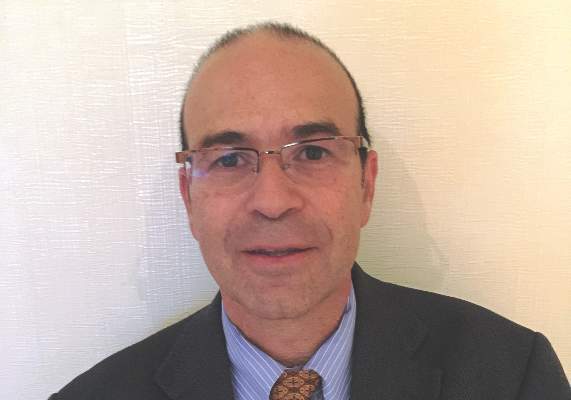User login
Alternative payment models: MedPAC says keep it simple
WASHINGTON – A federal advisory panel has straightforward advice for the government as it shifts towards value-based health care: Keep it simple.
At the Jan. 15 meeting of the Medicare Payment Advisory Commission (MedPAC), Commissioner Warner Thomas said, “I think one of our first principles should be to try to simplify this because it’s very complicated for a provider to try to understand what path to take and how to play in these situations. We want providers to engage in this and I think there is a lot of aversion because folks don’t understand it, and they’re not sure where to play or where not to play.”
Officials at the Centers for Medicare & Medicaid Services are drafting the regulations needed to implement the Medicare Access & CHIP Reauthorization Act (MACRA); the proposed regulations are expected in the Spring.
MedPAC staff offered a number of principles they hope to see incorporated into the final design for alternative payment models (APMs) under the law, including:
• Incentive payments to providers should be distributed only if the entities they are a part of are able to successfully control cost, improve quality, or both.
• Entities should have enough beneficiaries to detect changes in spending and quality.
• Entities should be at risk for total Part A and Part B spending; in the future, Part D also might be measured.
• Entities should be allowed to share savings with beneficiaries.
• Regulatory relief should be possible.
Several MedPAC commissioners focused on how physicians are viewing the risk they will be asked to assume in an APM.
APMs are “an attempt to sort of jump start a movement in the direction of risk taking from a group that I don’t think is very thrilled about taking financial risk and has shown it by their actual practice in the face of efforts at least to nudge them in this direction,” said Commissioner Bill Gradison Jr., a former congressman from Ohio who served on the House Committee on Ways and Means. “Having said that, I wish I had a better understanding of the motivation of physicians in terms of what might move them in this direction. The assumption here is that the money will move them, and maybe it’s that simple, but I am not too sure about that.”
Commissioner Jack Hoadley, Ph.D., of the Health Policy Institute at Georgetown University, Washington, noted that the if there is too little risk involved, there tends to be little movement in changing the behavior.
Dr. Hoadley suggested that CMS could consider “looking at some of the models by which risk can be structured so it puts plenty of money on the line but it doesn’t do it in a way that’s going to get complicated in terms of physicians owing money back.”
Commissioners also recommended a tight threshold, at least early on, to show that cost containment and/or quality improvement are well established before an entity can move into an APM and receive a financial incentive.
“Let’s keep the initial round and definition tight and actually demand a track record before we qualify something as an alternative payment mechanism,” said Commissioner Kathy Buto, a U.S. and international health policy consultant and former deputy executive secretary in the U.S. Health & Human Services Department. “Once you open this up, you can’t close it down. You cannot walk it back. We are talking about paying a lot more money, 5% more and if the definition is too loose and too many entities get into it, you can never walk it back and you will be just adding to the expenditures.”
WASHINGTON – A federal advisory panel has straightforward advice for the government as it shifts towards value-based health care: Keep it simple.
At the Jan. 15 meeting of the Medicare Payment Advisory Commission (MedPAC), Commissioner Warner Thomas said, “I think one of our first principles should be to try to simplify this because it’s very complicated for a provider to try to understand what path to take and how to play in these situations. We want providers to engage in this and I think there is a lot of aversion because folks don’t understand it, and they’re not sure where to play or where not to play.”
Officials at the Centers for Medicare & Medicaid Services are drafting the regulations needed to implement the Medicare Access & CHIP Reauthorization Act (MACRA); the proposed regulations are expected in the Spring.
MedPAC staff offered a number of principles they hope to see incorporated into the final design for alternative payment models (APMs) under the law, including:
• Incentive payments to providers should be distributed only if the entities they are a part of are able to successfully control cost, improve quality, or both.
• Entities should have enough beneficiaries to detect changes in spending and quality.
• Entities should be at risk for total Part A and Part B spending; in the future, Part D also might be measured.
• Entities should be allowed to share savings with beneficiaries.
• Regulatory relief should be possible.
Several MedPAC commissioners focused on how physicians are viewing the risk they will be asked to assume in an APM.
APMs are “an attempt to sort of jump start a movement in the direction of risk taking from a group that I don’t think is very thrilled about taking financial risk and has shown it by their actual practice in the face of efforts at least to nudge them in this direction,” said Commissioner Bill Gradison Jr., a former congressman from Ohio who served on the House Committee on Ways and Means. “Having said that, I wish I had a better understanding of the motivation of physicians in terms of what might move them in this direction. The assumption here is that the money will move them, and maybe it’s that simple, but I am not too sure about that.”
Commissioner Jack Hoadley, Ph.D., of the Health Policy Institute at Georgetown University, Washington, noted that the if there is too little risk involved, there tends to be little movement in changing the behavior.
Dr. Hoadley suggested that CMS could consider “looking at some of the models by which risk can be structured so it puts plenty of money on the line but it doesn’t do it in a way that’s going to get complicated in terms of physicians owing money back.”
Commissioners also recommended a tight threshold, at least early on, to show that cost containment and/or quality improvement are well established before an entity can move into an APM and receive a financial incentive.
“Let’s keep the initial round and definition tight and actually demand a track record before we qualify something as an alternative payment mechanism,” said Commissioner Kathy Buto, a U.S. and international health policy consultant and former deputy executive secretary in the U.S. Health & Human Services Department. “Once you open this up, you can’t close it down. You cannot walk it back. We are talking about paying a lot more money, 5% more and if the definition is too loose and too many entities get into it, you can never walk it back and you will be just adding to the expenditures.”
WASHINGTON – A federal advisory panel has straightforward advice for the government as it shifts towards value-based health care: Keep it simple.
At the Jan. 15 meeting of the Medicare Payment Advisory Commission (MedPAC), Commissioner Warner Thomas said, “I think one of our first principles should be to try to simplify this because it’s very complicated for a provider to try to understand what path to take and how to play in these situations. We want providers to engage in this and I think there is a lot of aversion because folks don’t understand it, and they’re not sure where to play or where not to play.”
Officials at the Centers for Medicare & Medicaid Services are drafting the regulations needed to implement the Medicare Access & CHIP Reauthorization Act (MACRA); the proposed regulations are expected in the Spring.
MedPAC staff offered a number of principles they hope to see incorporated into the final design for alternative payment models (APMs) under the law, including:
• Incentive payments to providers should be distributed only if the entities they are a part of are able to successfully control cost, improve quality, or both.
• Entities should have enough beneficiaries to detect changes in spending and quality.
• Entities should be at risk for total Part A and Part B spending; in the future, Part D also might be measured.
• Entities should be allowed to share savings with beneficiaries.
• Regulatory relief should be possible.
Several MedPAC commissioners focused on how physicians are viewing the risk they will be asked to assume in an APM.
APMs are “an attempt to sort of jump start a movement in the direction of risk taking from a group that I don’t think is very thrilled about taking financial risk and has shown it by their actual practice in the face of efforts at least to nudge them in this direction,” said Commissioner Bill Gradison Jr., a former congressman from Ohio who served on the House Committee on Ways and Means. “Having said that, I wish I had a better understanding of the motivation of physicians in terms of what might move them in this direction. The assumption here is that the money will move them, and maybe it’s that simple, but I am not too sure about that.”
Commissioner Jack Hoadley, Ph.D., of the Health Policy Institute at Georgetown University, Washington, noted that the if there is too little risk involved, there tends to be little movement in changing the behavior.
Dr. Hoadley suggested that CMS could consider “looking at some of the models by which risk can be structured so it puts plenty of money on the line but it doesn’t do it in a way that’s going to get complicated in terms of physicians owing money back.”
Commissioners also recommended a tight threshold, at least early on, to show that cost containment and/or quality improvement are well established before an entity can move into an APM and receive a financial incentive.
“Let’s keep the initial round and definition tight and actually demand a track record before we qualify something as an alternative payment mechanism,” said Commissioner Kathy Buto, a U.S. and international health policy consultant and former deputy executive secretary in the U.S. Health & Human Services Department. “Once you open this up, you can’t close it down. You cannot walk it back. We are talking about paying a lot more money, 5% more and if the definition is too loose and too many entities get into it, you can never walk it back and you will be just adding to the expenditures.”
AT A MEDPAC MEETING
President Obama calls for ‘moon shot’ to cure cancer
President Obama is calling on America’s medical research industry to cure cancer.
In his final State of the Union address, delivered Jan. 12, Mr. Obama compared this moment to that embraced by the nation in response to the Soviet Union’s foray into space: Within 12 years, Americans stepped foot on the Moon.
“Last year, Vice President [Joe] Biden said that, with a new moon shot, America can cure cancer,” President Obama said. “Tonight, I’m announcing a new national effort to get it done.”
No further details were given, except that Vice President Biden is being put “in charge of Mission Control,” after noting his role in getting increased funding in the recent budget for the National Institutes of Health.
The American Association for Cancer Research (AACR) applauded the commitment to curing cancer.
“We have indeed reached an inflection point, where the number of discoveries that are being made at such an accelerated pace are saving lives and bringing enormous hope for cancer patients, even those with advanced disease,” Dr. José Baselga, AACR president, said in a statement. “Now is the time for a major new initiative in cancer science that supports and builds upon our basic science foundation while translating these exciting scientific discoveries into improved treatments for cancer patients, such as in the areas of genomics, precision medicine, and immuno-oncology.”
The AACR said that members of its organization were among a group that met with Vice President Biden on Jan. 8 to discuss the state of cancer research.
The American Society of Clinical Oncology concurred.
“With nearly 1.7 million people in the United States diagnosed with cancer each year, and the incidence of cancer expected to rise to 2.3 million cases per year by 2030, it is imperative that we do all we can to bring more effective treatments from the laboratory bench to the patient’s bedside as quickly as possible,” Dr. Richard L. Schilsky, ASCO chief medical officer, said in a statement. “We must recommit to vastly speeding the discovery of new cancer treatments and enabling the possibility of precision medicine for every individual with cancer.”
The annual address to Congress was light on health care issues, with President Obama acknowledging U.S. leadership in helping to halt the Ebola epidemic and adding that “we are on track to end the scourge of HIV/AIDS, and we have the capacity to accomplish the same thing with malaria – something I’ll be pushing this Congress to fund this year.”
Rather, President Obama focused more on the economy and the security of the nation, as well as calling on Americans to be more active in voting and the overall political process.
President Obama is calling on America’s medical research industry to cure cancer.
In his final State of the Union address, delivered Jan. 12, Mr. Obama compared this moment to that embraced by the nation in response to the Soviet Union’s foray into space: Within 12 years, Americans stepped foot on the Moon.
“Last year, Vice President [Joe] Biden said that, with a new moon shot, America can cure cancer,” President Obama said. “Tonight, I’m announcing a new national effort to get it done.”
No further details were given, except that Vice President Biden is being put “in charge of Mission Control,” after noting his role in getting increased funding in the recent budget for the National Institutes of Health.
The American Association for Cancer Research (AACR) applauded the commitment to curing cancer.
“We have indeed reached an inflection point, where the number of discoveries that are being made at such an accelerated pace are saving lives and bringing enormous hope for cancer patients, even those with advanced disease,” Dr. José Baselga, AACR president, said in a statement. “Now is the time for a major new initiative in cancer science that supports and builds upon our basic science foundation while translating these exciting scientific discoveries into improved treatments for cancer patients, such as in the areas of genomics, precision medicine, and immuno-oncology.”
The AACR said that members of its organization were among a group that met with Vice President Biden on Jan. 8 to discuss the state of cancer research.
The American Society of Clinical Oncology concurred.
“With nearly 1.7 million people in the United States diagnosed with cancer each year, and the incidence of cancer expected to rise to 2.3 million cases per year by 2030, it is imperative that we do all we can to bring more effective treatments from the laboratory bench to the patient’s bedside as quickly as possible,” Dr. Richard L. Schilsky, ASCO chief medical officer, said in a statement. “We must recommit to vastly speeding the discovery of new cancer treatments and enabling the possibility of precision medicine for every individual with cancer.”
The annual address to Congress was light on health care issues, with President Obama acknowledging U.S. leadership in helping to halt the Ebola epidemic and adding that “we are on track to end the scourge of HIV/AIDS, and we have the capacity to accomplish the same thing with malaria – something I’ll be pushing this Congress to fund this year.”
Rather, President Obama focused more on the economy and the security of the nation, as well as calling on Americans to be more active in voting and the overall political process.
President Obama is calling on America’s medical research industry to cure cancer.
In his final State of the Union address, delivered Jan. 12, Mr. Obama compared this moment to that embraced by the nation in response to the Soviet Union’s foray into space: Within 12 years, Americans stepped foot on the Moon.
“Last year, Vice President [Joe] Biden said that, with a new moon shot, America can cure cancer,” President Obama said. “Tonight, I’m announcing a new national effort to get it done.”
No further details were given, except that Vice President Biden is being put “in charge of Mission Control,” after noting his role in getting increased funding in the recent budget for the National Institutes of Health.
The American Association for Cancer Research (AACR) applauded the commitment to curing cancer.
“We have indeed reached an inflection point, where the number of discoveries that are being made at such an accelerated pace are saving lives and bringing enormous hope for cancer patients, even those with advanced disease,” Dr. José Baselga, AACR president, said in a statement. “Now is the time for a major new initiative in cancer science that supports and builds upon our basic science foundation while translating these exciting scientific discoveries into improved treatments for cancer patients, such as in the areas of genomics, precision medicine, and immuno-oncology.”
The AACR said that members of its organization were among a group that met with Vice President Biden on Jan. 8 to discuss the state of cancer research.
The American Society of Clinical Oncology concurred.
“With nearly 1.7 million people in the United States diagnosed with cancer each year, and the incidence of cancer expected to rise to 2.3 million cases per year by 2030, it is imperative that we do all we can to bring more effective treatments from the laboratory bench to the patient’s bedside as quickly as possible,” Dr. Richard L. Schilsky, ASCO chief medical officer, said in a statement. “We must recommit to vastly speeding the discovery of new cancer treatments and enabling the possibility of precision medicine for every individual with cancer.”
The annual address to Congress was light on health care issues, with President Obama acknowledging U.S. leadership in helping to halt the Ebola epidemic and adding that “we are on track to end the scourge of HIV/AIDS, and we have the capacity to accomplish the same thing with malaria – something I’ll be pushing this Congress to fund this year.”
Rather, President Obama focused more on the economy and the security of the nation, as well as calling on Americans to be more active in voting and the overall political process.
ABIM delays MOC’s practice assessment requirement till 2019
The American Board of Internal Medicine announced that it won’t implement its maintenance of certification program’s practice assessment, patient voice, and patient safety components until Jan. 1, 2019.
ABIM had previously delayed the three requirements until the end of 2016, but it extended the delay following recommendations from a task force formed to look at the overall maintenance of certification program.
The Assessment 2020 Task Force report suggested that ABIM should step back from assessing physicians’ quality of care and performance improvement. That portion has received pushback from the physician community, and that feedback contributed to the decision to delay.
“We decided to extend our decision not to require practice assessment while we work to expand the list of activities we recognize for MOC credit and seek partnerships to increase clinically relevant opportunities for doctors to engage in this important work,” said ABIM Chief Medical Officer Richard Battaglia. “Physicians can still earn MOC points for completing approved practice assessment activities, and one of the pathways for these points is through the American Board of Medical Specialties Multispecialty Portfolio Approval Program.”
ABIM will provide at least a full year’s notice when the requirements are reinstated, with updates on progress being communicated through the Transforming ABIM blog, Dr. Battaglia noted.The delay, however, does not lessen the importance of practice assessment, he cautioned.
“We hear from physicians that completing these activities allows them to look at data from their practice and implement quality improvements that lead to better care for their patients and improved processes in their practice,” Dr. Battaglia said. “But we also hear from physician feedback that the MOC program should do a better job recognizing meaningful activities they are already doing in practice.”
He also called on physicians to continue providing feedback to help ensure that MOC is a meaningful and relevant program.
“We want physicians to help us shape a MOC program that is meaningful and relevant, which is why we are looking to ensure that physicians receive credit for important quality improvement work they are already doing in practice,” Dr. Battaglia said. “Physicians have been telling us that there are many meaningful quality improvement programs that we could give credit for, so we are acting on their input to do a better job recognizing these activities physicians are already doing in practice.”
The American College of Physicians applauded ABIM’s decision to delay.
“The reaction from the physician community, the reaction from ACP, and certainly my own personal reaction is that we applaud that they are suspending the requirement longer,” ACP CEO Steven Weinberger said in an interview. “It will take more time to sort out what kind of role the board should have in those forms of assessment, and whether in fact they might just be able to use assessments provided by other organizations rather than doing the assessment themselves,”
He suggested that ABIM is looking at where it can incorporate assessments by other organizations, including public and private insurers, so it can remain focused on assessing knowledge and clinical skill.
“I think one of things they want to avoid is redundancy – a physician’s performance might be measured in the insurance environment, whether it be private or public, and then separately ABIM is doing that same sort of measurement,” Dr. Weinberger said.
The American Board of Internal Medicine announced that it won’t implement its maintenance of certification program’s practice assessment, patient voice, and patient safety components until Jan. 1, 2019.
ABIM had previously delayed the three requirements until the end of 2016, but it extended the delay following recommendations from a task force formed to look at the overall maintenance of certification program.
The Assessment 2020 Task Force report suggested that ABIM should step back from assessing physicians’ quality of care and performance improvement. That portion has received pushback from the physician community, and that feedback contributed to the decision to delay.
“We decided to extend our decision not to require practice assessment while we work to expand the list of activities we recognize for MOC credit and seek partnerships to increase clinically relevant opportunities for doctors to engage in this important work,” said ABIM Chief Medical Officer Richard Battaglia. “Physicians can still earn MOC points for completing approved practice assessment activities, and one of the pathways for these points is through the American Board of Medical Specialties Multispecialty Portfolio Approval Program.”
ABIM will provide at least a full year’s notice when the requirements are reinstated, with updates on progress being communicated through the Transforming ABIM blog, Dr. Battaglia noted.The delay, however, does not lessen the importance of practice assessment, he cautioned.
“We hear from physicians that completing these activities allows them to look at data from their practice and implement quality improvements that lead to better care for their patients and improved processes in their practice,” Dr. Battaglia said. “But we also hear from physician feedback that the MOC program should do a better job recognizing meaningful activities they are already doing in practice.”
He also called on physicians to continue providing feedback to help ensure that MOC is a meaningful and relevant program.
“We want physicians to help us shape a MOC program that is meaningful and relevant, which is why we are looking to ensure that physicians receive credit for important quality improvement work they are already doing in practice,” Dr. Battaglia said. “Physicians have been telling us that there are many meaningful quality improvement programs that we could give credit for, so we are acting on their input to do a better job recognizing these activities physicians are already doing in practice.”
The American College of Physicians applauded ABIM’s decision to delay.
“The reaction from the physician community, the reaction from ACP, and certainly my own personal reaction is that we applaud that they are suspending the requirement longer,” ACP CEO Steven Weinberger said in an interview. “It will take more time to sort out what kind of role the board should have in those forms of assessment, and whether in fact they might just be able to use assessments provided by other organizations rather than doing the assessment themselves,”
He suggested that ABIM is looking at where it can incorporate assessments by other organizations, including public and private insurers, so it can remain focused on assessing knowledge and clinical skill.
“I think one of things they want to avoid is redundancy – a physician’s performance might be measured in the insurance environment, whether it be private or public, and then separately ABIM is doing that same sort of measurement,” Dr. Weinberger said.
The American Board of Internal Medicine announced that it won’t implement its maintenance of certification program’s practice assessment, patient voice, and patient safety components until Jan. 1, 2019.
ABIM had previously delayed the three requirements until the end of 2016, but it extended the delay following recommendations from a task force formed to look at the overall maintenance of certification program.
The Assessment 2020 Task Force report suggested that ABIM should step back from assessing physicians’ quality of care and performance improvement. That portion has received pushback from the physician community, and that feedback contributed to the decision to delay.
“We decided to extend our decision not to require practice assessment while we work to expand the list of activities we recognize for MOC credit and seek partnerships to increase clinically relevant opportunities for doctors to engage in this important work,” said ABIM Chief Medical Officer Richard Battaglia. “Physicians can still earn MOC points for completing approved practice assessment activities, and one of the pathways for these points is through the American Board of Medical Specialties Multispecialty Portfolio Approval Program.”
ABIM will provide at least a full year’s notice when the requirements are reinstated, with updates on progress being communicated through the Transforming ABIM blog, Dr. Battaglia noted.The delay, however, does not lessen the importance of practice assessment, he cautioned.
“We hear from physicians that completing these activities allows them to look at data from their practice and implement quality improvements that lead to better care for their patients and improved processes in their practice,” Dr. Battaglia said. “But we also hear from physician feedback that the MOC program should do a better job recognizing meaningful activities they are already doing in practice.”
He also called on physicians to continue providing feedback to help ensure that MOC is a meaningful and relevant program.
“We want physicians to help us shape a MOC program that is meaningful and relevant, which is why we are looking to ensure that physicians receive credit for important quality improvement work they are already doing in practice,” Dr. Battaglia said. “Physicians have been telling us that there are many meaningful quality improvement programs that we could give credit for, so we are acting on their input to do a better job recognizing these activities physicians are already doing in practice.”
The American College of Physicians applauded ABIM’s decision to delay.
“The reaction from the physician community, the reaction from ACP, and certainly my own personal reaction is that we applaud that they are suspending the requirement longer,” ACP CEO Steven Weinberger said in an interview. “It will take more time to sort out what kind of role the board should have in those forms of assessment, and whether in fact they might just be able to use assessments provided by other organizations rather than doing the assessment themselves,”
He suggested that ABIM is looking at where it can incorporate assessments by other organizations, including public and private insurers, so it can remain focused on assessing knowledge and clinical skill.
“I think one of things they want to avoid is redundancy – a physician’s performance might be measured in the insurance environment, whether it be private or public, and then separately ABIM is doing that same sort of measurement,” Dr. Weinberger said.
President vetoes bill to repeal ACA
President Obama formally vetoed, as expected, a budget reconciliation bill that would have effectively killed the Affordable Care Act.
The budget reconciliation bill, H.R. 3762, passed in the Senate in December and cleared the House nearly along party lines on Jan. 6.
In announcing the veto, President Obama said in a statement that the bill would increase the number of uninsured by 22 million after 2017 and “would cost millions of hard-working middle-class families the security of affordable health coverage they deserve. Reliable health care coverage would no longer be a right for everyone: It would return to being a privilege for a few.”
He also noted that provisions that would defund Planned Parenthood would limit access to health care and disproportionately impact low-income individuals.
“Because of the harm this bill would cause to the health and financial security of millions of Americans, it has earned my veto,” he said.
President Obama formally vetoed, as expected, a budget reconciliation bill that would have effectively killed the Affordable Care Act.
The budget reconciliation bill, H.R. 3762, passed in the Senate in December and cleared the House nearly along party lines on Jan. 6.
In announcing the veto, President Obama said in a statement that the bill would increase the number of uninsured by 22 million after 2017 and “would cost millions of hard-working middle-class families the security of affordable health coverage they deserve. Reliable health care coverage would no longer be a right for everyone: It would return to being a privilege for a few.”
He also noted that provisions that would defund Planned Parenthood would limit access to health care and disproportionately impact low-income individuals.
“Because of the harm this bill would cause to the health and financial security of millions of Americans, it has earned my veto,” he said.
President Obama formally vetoed, as expected, a budget reconciliation bill that would have effectively killed the Affordable Care Act.
The budget reconciliation bill, H.R. 3762, passed in the Senate in December and cleared the House nearly along party lines on Jan. 6.
In announcing the veto, President Obama said in a statement that the bill would increase the number of uninsured by 22 million after 2017 and “would cost millions of hard-working middle-class families the security of affordable health coverage they deserve. Reliable health care coverage would no longer be a right for everyone: It would return to being a privilege for a few.”
He also noted that provisions that would defund Planned Parenthood would limit access to health care and disproportionately impact low-income individuals.
“Because of the harm this bill would cause to the health and financial security of millions of Americans, it has earned my veto,” he said.
Congress passes ACA repeal bill; President says he will veto
After more than 60 House-originated bills attacking the Affordable Care Act stalled before completing their congressional journey, President Obama will finally get the opportunity to veto one.
On Jan. 6, the House passed a budget reconciliation bill that would essentially gut Obamacare and defund Planned Parenthood for at least 1 year by a 240-181 vote, largely on party lines. One Democrat joined the Republicans in approving the bill, while three Republicans voted against the measure.
The Senate passed the same bill, H.R. 3762, in December. The legislation would repeal the individual and employer mandates and associated tax penalties; phase out Medicaid expansion; eliminate federal subsidies to help patients buy insurance on the federal exchange; repeal the “Cadillac tax” on high-value health insurance plans; repeal the medical device tax; and defund Planned Parenthood for 1 year and divert some of those funds to community health centers.
“This reconciliation bill would cause an estimated 22 million Americans … to lose their health care, would increase premiums by approximately 20%, would provide employers with much uncertainty, and worsen the outlook for deficits over the long term,” Rep. Steny Hoyer (D-Md.) said during floor debate prior to the vote. “Only in the first 10-year window do you have a savings. The [Congressional Budget Office] says if you go to the second 10 years, this bill is a loser and exacerbates the deficit.”
Republicans continue to argue that the Affordable Care Act is anything but affordable.
“This bill will help undermine and get rid of the foundation of Obamacare which, I know as a physician, has accelerated the negative trends in health care, of which there are many,” said Rep. Charles Boustany Jr. (R-La.). “[It] is not the affordable, patient-centered health care that the American people deserve.”
In a statement, Health and Human Services Secretary Sylvia Burwell said, “President Obama has clearly said he will veto this bill. As I travel the country, I consistently hear Americans say that they want Washington to build on the progress we have made to increase access to coverage, drive down the growth of health costs and improve the quality of care. Unfortunately, today’s partisan effort in the House of Representatives to repeal key parts of the ACA, along with its effective defunding of Planned Parenthood, does the opposite.”
After more than 60 House-originated bills attacking the Affordable Care Act stalled before completing their congressional journey, President Obama will finally get the opportunity to veto one.
On Jan. 6, the House passed a budget reconciliation bill that would essentially gut Obamacare and defund Planned Parenthood for at least 1 year by a 240-181 vote, largely on party lines. One Democrat joined the Republicans in approving the bill, while three Republicans voted against the measure.
The Senate passed the same bill, H.R. 3762, in December. The legislation would repeal the individual and employer mandates and associated tax penalties; phase out Medicaid expansion; eliminate federal subsidies to help patients buy insurance on the federal exchange; repeal the “Cadillac tax” on high-value health insurance plans; repeal the medical device tax; and defund Planned Parenthood for 1 year and divert some of those funds to community health centers.
“This reconciliation bill would cause an estimated 22 million Americans … to lose their health care, would increase premiums by approximately 20%, would provide employers with much uncertainty, and worsen the outlook for deficits over the long term,” Rep. Steny Hoyer (D-Md.) said during floor debate prior to the vote. “Only in the first 10-year window do you have a savings. The [Congressional Budget Office] says if you go to the second 10 years, this bill is a loser and exacerbates the deficit.”
Republicans continue to argue that the Affordable Care Act is anything but affordable.
“This bill will help undermine and get rid of the foundation of Obamacare which, I know as a physician, has accelerated the negative trends in health care, of which there are many,” said Rep. Charles Boustany Jr. (R-La.). “[It] is not the affordable, patient-centered health care that the American people deserve.”
In a statement, Health and Human Services Secretary Sylvia Burwell said, “President Obama has clearly said he will veto this bill. As I travel the country, I consistently hear Americans say that they want Washington to build on the progress we have made to increase access to coverage, drive down the growth of health costs and improve the quality of care. Unfortunately, today’s partisan effort in the House of Representatives to repeal key parts of the ACA, along with its effective defunding of Planned Parenthood, does the opposite.”
After more than 60 House-originated bills attacking the Affordable Care Act stalled before completing their congressional journey, President Obama will finally get the opportunity to veto one.
On Jan. 6, the House passed a budget reconciliation bill that would essentially gut Obamacare and defund Planned Parenthood for at least 1 year by a 240-181 vote, largely on party lines. One Democrat joined the Republicans in approving the bill, while three Republicans voted against the measure.
The Senate passed the same bill, H.R. 3762, in December. The legislation would repeal the individual and employer mandates and associated tax penalties; phase out Medicaid expansion; eliminate federal subsidies to help patients buy insurance on the federal exchange; repeal the “Cadillac tax” on high-value health insurance plans; repeal the medical device tax; and defund Planned Parenthood for 1 year and divert some of those funds to community health centers.
“This reconciliation bill would cause an estimated 22 million Americans … to lose their health care, would increase premiums by approximately 20%, would provide employers with much uncertainty, and worsen the outlook for deficits over the long term,” Rep. Steny Hoyer (D-Md.) said during floor debate prior to the vote. “Only in the first 10-year window do you have a savings. The [Congressional Budget Office] says if you go to the second 10 years, this bill is a loser and exacerbates the deficit.”
Republicans continue to argue that the Affordable Care Act is anything but affordable.
“This bill will help undermine and get rid of the foundation of Obamacare which, I know as a physician, has accelerated the negative trends in health care, of which there are many,” said Rep. Charles Boustany Jr. (R-La.). “[It] is not the affordable, patient-centered health care that the American people deserve.”
In a statement, Health and Human Services Secretary Sylvia Burwell said, “President Obama has clearly said he will veto this bill. As I travel the country, I consistently hear Americans say that they want Washington to build on the progress we have made to increase access to coverage, drive down the growth of health costs and improve the quality of care. Unfortunately, today’s partisan effort in the House of Representatives to repeal key parts of the ACA, along with its effective defunding of Planned Parenthood, does the opposite.”
Physicians need to be more proactive in learning about patient IBS symptoms
Patients can be reluctant to talk about bowel issues and physicians may need to take more of an initiative to draw that information out.
This was a key takeaway from the recent American Gastroenterological Association’s “IBS In America” survey.
“We found that patients are reluctant to talk to physicians about their symptoms,” survey coauthor Dr. Anthony Lembo, associate professor of medicine at Harvard Medical School, Boston, said in an interview, noting that the survey of patient and physician views on irritable bowel syndrome revealed that patients find it easier to talk about sexually transmitted diseases than they do about bowel functions.
In fact, according to the survey results, 67% of patients who are experiencing symptoms of IBS will go for more than 1 year before seeing a doctor about it, and 43% will go longer than 1 year after taking over-the-counter remedies before speaking to a physician about their symptoms.
However, patients will have conversations with family and friends, often taking advice from them, before consulting with a medical professional. Fifty-nine percent said they have received advice from family and friends and 90% of those receiving advice said they followed it.
Physicians “should recognize that and initiate the conversation so we can find out what the symptoms are,” Dr. Lembo said.
In fact, 71% of survey respondents who have never sought treatment for their GI symptoms said “no” when asked if a health care professional asked about gastrointestinal symptoms or regularity during an annual check-up or exam, with 40% saying they did not tell their doctor about their symptoms.
The other point that the survey drives home and that physicians should be aware of, Dr. Lembo added, is the impact IBS has on patient quality of life.
“We know that IBS can have a major impact on their quality of life, but this survey put more concrete numbers to it in terms of how patients deal with it on a day-in, day-out basis,” he said.
For example, he highlighted that those suffering from IBS report missing on average 2 work or school days per month and have between 8 and 9 days per month when their productivity is hampered due to IBS symptoms.
Indeed, the survey noted that patients were willing to go so far as to trade a month without sex if it meant a month of relief from their IBS symptoms.
“Those kind of numbers, I think they’re important for physicians to know. IBS symptoms can have an impact on [patients’] quality of life and their day-to-day function,” he said.
Patients can be reluctant to talk about bowel issues and physicians may need to take more of an initiative to draw that information out.
This was a key takeaway from the recent American Gastroenterological Association’s “IBS In America” survey.
“We found that patients are reluctant to talk to physicians about their symptoms,” survey coauthor Dr. Anthony Lembo, associate professor of medicine at Harvard Medical School, Boston, said in an interview, noting that the survey of patient and physician views on irritable bowel syndrome revealed that patients find it easier to talk about sexually transmitted diseases than they do about bowel functions.
In fact, according to the survey results, 67% of patients who are experiencing symptoms of IBS will go for more than 1 year before seeing a doctor about it, and 43% will go longer than 1 year after taking over-the-counter remedies before speaking to a physician about their symptoms.
However, patients will have conversations with family and friends, often taking advice from them, before consulting with a medical professional. Fifty-nine percent said they have received advice from family and friends and 90% of those receiving advice said they followed it.
Physicians “should recognize that and initiate the conversation so we can find out what the symptoms are,” Dr. Lembo said.
In fact, 71% of survey respondents who have never sought treatment for their GI symptoms said “no” when asked if a health care professional asked about gastrointestinal symptoms or regularity during an annual check-up or exam, with 40% saying they did not tell their doctor about their symptoms.
The other point that the survey drives home and that physicians should be aware of, Dr. Lembo added, is the impact IBS has on patient quality of life.
“We know that IBS can have a major impact on their quality of life, but this survey put more concrete numbers to it in terms of how patients deal with it on a day-in, day-out basis,” he said.
For example, he highlighted that those suffering from IBS report missing on average 2 work or school days per month and have between 8 and 9 days per month when their productivity is hampered due to IBS symptoms.
Indeed, the survey noted that patients were willing to go so far as to trade a month without sex if it meant a month of relief from their IBS symptoms.
“Those kind of numbers, I think they’re important for physicians to know. IBS symptoms can have an impact on [patients’] quality of life and their day-to-day function,” he said.
Patients can be reluctant to talk about bowel issues and physicians may need to take more of an initiative to draw that information out.
This was a key takeaway from the recent American Gastroenterological Association’s “IBS In America” survey.
“We found that patients are reluctant to talk to physicians about their symptoms,” survey coauthor Dr. Anthony Lembo, associate professor of medicine at Harvard Medical School, Boston, said in an interview, noting that the survey of patient and physician views on irritable bowel syndrome revealed that patients find it easier to talk about sexually transmitted diseases than they do about bowel functions.
In fact, according to the survey results, 67% of patients who are experiencing symptoms of IBS will go for more than 1 year before seeing a doctor about it, and 43% will go longer than 1 year after taking over-the-counter remedies before speaking to a physician about their symptoms.
However, patients will have conversations with family and friends, often taking advice from them, before consulting with a medical professional. Fifty-nine percent said they have received advice from family and friends and 90% of those receiving advice said they followed it.
Physicians “should recognize that and initiate the conversation so we can find out what the symptoms are,” Dr. Lembo said.
In fact, 71% of survey respondents who have never sought treatment for their GI symptoms said “no” when asked if a health care professional asked about gastrointestinal symptoms or regularity during an annual check-up or exam, with 40% saying they did not tell their doctor about their symptoms.
The other point that the survey drives home and that physicians should be aware of, Dr. Lembo added, is the impact IBS has on patient quality of life.
“We know that IBS can have a major impact on their quality of life, but this survey put more concrete numbers to it in terms of how patients deal with it on a day-in, day-out basis,” he said.
For example, he highlighted that those suffering from IBS report missing on average 2 work or school days per month and have between 8 and 9 days per month when their productivity is hampered due to IBS symptoms.
Indeed, the survey noted that patients were willing to go so far as to trade a month without sex if it meant a month of relief from their IBS symptoms.
“Those kind of numbers, I think they’re important for physicians to know. IBS symptoms can have an impact on [patients’] quality of life and their day-to-day function,” he said.
Crowded hospital EDs not dealing effectively with patient flow
Even though most crowded U.S. hospital emergency departments were adopting measures to improve patient flow, they were not adopting the most effective interventions, according to a new study in Health Affairs.
Hospitals “have been slow to adopt interventions that require a change in protocols. This may reflect the fact that ED crowding is a low hospital-wide priority in many facilities, despite the fact that it continues to worsen,” Dr. Leah Honigman Warner, attending physician in the department of emergency medicine at Long Island Jewish Medical Center, New Hyde Park, N.Y., and colleagues wrote in the December 2015 issue of Health Affairs (2015 Dec.;34[12]:2151-2159. doi: 10.1377/hlthaff.2015.0603).
Researchers examined data collected from the Centers for Disease Control and Prevention’s National Hospital Ambulatory Medical Care Survey on emergency department crowding interventions from 2007 to 2010 and found that “while the average number of crowding interventions adopted by hospitals has increased in recent years, there is still a significant gap in the adoption of many of the strategies that can reduce ED crowding and make crowded EDs safer.”
For example, two interventions – the use of full capacity protocol and boarding in inpatient hallways – were not adopted by the majority of the most crowded quartile of hospitals. Sixty percent of hospitals have not adopted full capacity protocol, and 80% do not transfer admitted patients to wait in inpatient hallways when all beds are full, researchers noted.
To highlight the effectiveness of full capacity protocol, authors point to the Canadian province of Alberta, which adopted the measure and saw ED length-of-stay reduced by one-third and ED boarding reduced by half.
Hospitals during the study period were employing a number of other strategies, including physical space expansion, which has not been proven to help crowding, and technology-related interventions, such as the use of electronic dashboards and computer-assisted triage, both of which are growing and can help reduce length of stay.
“There are data to support the use of ED crowding interventions and proven best practices,” the researchers conclude. “Now is the time for a national campaign to develop the standards to reduce ED crowding and eliminate ED boarding, which will allow hospitals and EDs to provide the highest-quality acute care.”
The authors did not declare any conflicts of interest.
Even though most crowded U.S. hospital emergency departments were adopting measures to improve patient flow, they were not adopting the most effective interventions, according to a new study in Health Affairs.
Hospitals “have been slow to adopt interventions that require a change in protocols. This may reflect the fact that ED crowding is a low hospital-wide priority in many facilities, despite the fact that it continues to worsen,” Dr. Leah Honigman Warner, attending physician in the department of emergency medicine at Long Island Jewish Medical Center, New Hyde Park, N.Y., and colleagues wrote in the December 2015 issue of Health Affairs (2015 Dec.;34[12]:2151-2159. doi: 10.1377/hlthaff.2015.0603).
Researchers examined data collected from the Centers for Disease Control and Prevention’s National Hospital Ambulatory Medical Care Survey on emergency department crowding interventions from 2007 to 2010 and found that “while the average number of crowding interventions adopted by hospitals has increased in recent years, there is still a significant gap in the adoption of many of the strategies that can reduce ED crowding and make crowded EDs safer.”
For example, two interventions – the use of full capacity protocol and boarding in inpatient hallways – were not adopted by the majority of the most crowded quartile of hospitals. Sixty percent of hospitals have not adopted full capacity protocol, and 80% do not transfer admitted patients to wait in inpatient hallways when all beds are full, researchers noted.
To highlight the effectiveness of full capacity protocol, authors point to the Canadian province of Alberta, which adopted the measure and saw ED length-of-stay reduced by one-third and ED boarding reduced by half.
Hospitals during the study period were employing a number of other strategies, including physical space expansion, which has not been proven to help crowding, and technology-related interventions, such as the use of electronic dashboards and computer-assisted triage, both of which are growing and can help reduce length of stay.
“There are data to support the use of ED crowding interventions and proven best practices,” the researchers conclude. “Now is the time for a national campaign to develop the standards to reduce ED crowding and eliminate ED boarding, which will allow hospitals and EDs to provide the highest-quality acute care.”
The authors did not declare any conflicts of interest.
Even though most crowded U.S. hospital emergency departments were adopting measures to improve patient flow, they were not adopting the most effective interventions, according to a new study in Health Affairs.
Hospitals “have been slow to adopt interventions that require a change in protocols. This may reflect the fact that ED crowding is a low hospital-wide priority in many facilities, despite the fact that it continues to worsen,” Dr. Leah Honigman Warner, attending physician in the department of emergency medicine at Long Island Jewish Medical Center, New Hyde Park, N.Y., and colleagues wrote in the December 2015 issue of Health Affairs (2015 Dec.;34[12]:2151-2159. doi: 10.1377/hlthaff.2015.0603).
Researchers examined data collected from the Centers for Disease Control and Prevention’s National Hospital Ambulatory Medical Care Survey on emergency department crowding interventions from 2007 to 2010 and found that “while the average number of crowding interventions adopted by hospitals has increased in recent years, there is still a significant gap in the adoption of many of the strategies that can reduce ED crowding and make crowded EDs safer.”
For example, two interventions – the use of full capacity protocol and boarding in inpatient hallways – were not adopted by the majority of the most crowded quartile of hospitals. Sixty percent of hospitals have not adopted full capacity protocol, and 80% do not transfer admitted patients to wait in inpatient hallways when all beds are full, researchers noted.
To highlight the effectiveness of full capacity protocol, authors point to the Canadian province of Alberta, which adopted the measure and saw ED length-of-stay reduced by one-third and ED boarding reduced by half.
Hospitals during the study period were employing a number of other strategies, including physical space expansion, which has not been proven to help crowding, and technology-related interventions, such as the use of electronic dashboards and computer-assisted triage, both of which are growing and can help reduce length of stay.
“There are data to support the use of ED crowding interventions and proven best practices,” the researchers conclude. “Now is the time for a national campaign to develop the standards to reduce ED crowding and eliminate ED boarding, which will allow hospitals and EDs to provide the highest-quality acute care.”
The authors did not declare any conflicts of interest.
FROM HEALTH AFFAIRS
Blanket hardship exemption for 2015 meaningful use authorized by Congress
For doctors unable to meet meaningful use requirements for 2015, Congress has approved a blanket process for those applying for a hardship exemption to avoid having a penalty applied to their Medicare payments in 2017.
By voice vote in the House on Dec. 18 and a unanimous consent vote later that day in the Senate, Congress passed the Patient Access and Medicare Protection Act (S. 2425), which allows CMS to grant hardship exemptions globally, rather than on a case-by-case basis.
There are a number of reasons a hardship exemption would be issued, including infrastructure-related problems, unforeseen circumstances, lack of face-to-face interactions, and lack of available certified electronic health records.
Doctors seeking the exemption will need to apply by March 15, 2016; hospitals must do so by April 1, 2016.
“Moving forward, this process will now allow doctors to avoid erroneous penalties that would have otherwise caused harm for patients seeking quality care,” Rep. Renee Ellmers (R-N.C.) said in a statement.
For doctors unable to meet meaningful use requirements for 2015, Congress has approved a blanket process for those applying for a hardship exemption to avoid having a penalty applied to their Medicare payments in 2017.
By voice vote in the House on Dec. 18 and a unanimous consent vote later that day in the Senate, Congress passed the Patient Access and Medicare Protection Act (S. 2425), which allows CMS to grant hardship exemptions globally, rather than on a case-by-case basis.
There are a number of reasons a hardship exemption would be issued, including infrastructure-related problems, unforeseen circumstances, lack of face-to-face interactions, and lack of available certified electronic health records.
Doctors seeking the exemption will need to apply by March 15, 2016; hospitals must do so by April 1, 2016.
“Moving forward, this process will now allow doctors to avoid erroneous penalties that would have otherwise caused harm for patients seeking quality care,” Rep. Renee Ellmers (R-N.C.) said in a statement.
For doctors unable to meet meaningful use requirements for 2015, Congress has approved a blanket process for those applying for a hardship exemption to avoid having a penalty applied to their Medicare payments in 2017.
By voice vote in the House on Dec. 18 and a unanimous consent vote later that day in the Senate, Congress passed the Patient Access and Medicare Protection Act (S. 2425), which allows CMS to grant hardship exemptions globally, rather than on a case-by-case basis.
There are a number of reasons a hardship exemption would be issued, including infrastructure-related problems, unforeseen circumstances, lack of face-to-face interactions, and lack of available certified electronic health records.
Doctors seeking the exemption will need to apply by March 15, 2016; hospitals must do so by April 1, 2016.
“Moving forward, this process will now allow doctors to avoid erroneous penalties that would have otherwise caused harm for patients seeking quality care,” Rep. Renee Ellmers (R-N.C.) said in a statement.
FDA clarifies indications for Pacira’s Exparel
Pacira Pharmaceuticals’ Exparel (bupivacaine liposome injectable suspension), used for pain management following surgery, is not limited to any specific surgery type, following the rescission of a warning letter issued by the Food and Drug Administration.
In a Dec. 14 letter to Exparel manufacturer Pacira Pharmaceuticals, the FDA said it was rescinding a September 2014 warning letter, noting that after reviewing the warning letter, the agency “determined that different statements in various parts of the approved labeling created ambiguity with respect to the scope of the approved indication.”
In doing so, the FDA clarified that Exparel is not limited to bunionectomy and hemorrhoidectomy procedures, which were what the drug was tested on in its pivotal trials.
The letter also offers guidance to say that Exparel is indicated for transversus abdominis plane blocks, and the indication does encompass use for postoperative analgesia when administered as local infiltration at the site of oral surgical procedures, including tooth extractions.
Pacira Pharmaceuticals’ Exparel (bupivacaine liposome injectable suspension), used for pain management following surgery, is not limited to any specific surgery type, following the rescission of a warning letter issued by the Food and Drug Administration.
In a Dec. 14 letter to Exparel manufacturer Pacira Pharmaceuticals, the FDA said it was rescinding a September 2014 warning letter, noting that after reviewing the warning letter, the agency “determined that different statements in various parts of the approved labeling created ambiguity with respect to the scope of the approved indication.”
In doing so, the FDA clarified that Exparel is not limited to bunionectomy and hemorrhoidectomy procedures, which were what the drug was tested on in its pivotal trials.
The letter also offers guidance to say that Exparel is indicated for transversus abdominis plane blocks, and the indication does encompass use for postoperative analgesia when administered as local infiltration at the site of oral surgical procedures, including tooth extractions.
Pacira Pharmaceuticals’ Exparel (bupivacaine liposome injectable suspension), used for pain management following surgery, is not limited to any specific surgery type, following the rescission of a warning letter issued by the Food and Drug Administration.
In a Dec. 14 letter to Exparel manufacturer Pacira Pharmaceuticals, the FDA said it was rescinding a September 2014 warning letter, noting that after reviewing the warning letter, the agency “determined that different statements in various parts of the approved labeling created ambiguity with respect to the scope of the approved indication.”
In doing so, the FDA clarified that Exparel is not limited to bunionectomy and hemorrhoidectomy procedures, which were what the drug was tested on in its pivotal trials.
The letter also offers guidance to say that Exparel is indicated for transversus abdominis plane blocks, and the indication does encompass use for postoperative analgesia when administered as local infiltration at the site of oral surgical procedures, including tooth extractions.
Budget deal with NIH, CDC funding boost clears Congress
A budget deal that includes increases in funding to both the National Institutes of Health and the Centers for Disease Control and Prevention quickly passed through Congress and is expected to be signed by President Obama.
The omnibus budget agreement, announced Dec. 15, cleared the House on Dec. 18 by a 316-113 vote, with five representatives not voting. The agreement was quickly passed the same day in the Senate by a 65-33 vote. If signed, the budget bill would fund the government through the end of fiscal year 2016.
The agreement would boost funding to the NIH by $2 billion, bringing the total budget to $32 billion. It would increase funding for the CDC by about $308 million, bringing the 2016 budget to $7.2 billion.
The bill would cut $30 million from the Agency for Healthcare Research and Quality budget and keep the budgets at the Centers for Medicare & Medicaid Services and the Office of the National Coordinator for Health Information Technology at their fiscal 2015 levels.
Absent from the bill are any changes to the Meaningful Use program, as well as any cuts to Planned Parenthood funding.
A budget deal that includes increases in funding to both the National Institutes of Health and the Centers for Disease Control and Prevention quickly passed through Congress and is expected to be signed by President Obama.
The omnibus budget agreement, announced Dec. 15, cleared the House on Dec. 18 by a 316-113 vote, with five representatives not voting. The agreement was quickly passed the same day in the Senate by a 65-33 vote. If signed, the budget bill would fund the government through the end of fiscal year 2016.
The agreement would boost funding to the NIH by $2 billion, bringing the total budget to $32 billion. It would increase funding for the CDC by about $308 million, bringing the 2016 budget to $7.2 billion.
The bill would cut $30 million from the Agency for Healthcare Research and Quality budget and keep the budgets at the Centers for Medicare & Medicaid Services and the Office of the National Coordinator for Health Information Technology at their fiscal 2015 levels.
Absent from the bill are any changes to the Meaningful Use program, as well as any cuts to Planned Parenthood funding.
A budget deal that includes increases in funding to both the National Institutes of Health and the Centers for Disease Control and Prevention quickly passed through Congress and is expected to be signed by President Obama.
The omnibus budget agreement, announced Dec. 15, cleared the House on Dec. 18 by a 316-113 vote, with five representatives not voting. The agreement was quickly passed the same day in the Senate by a 65-33 vote. If signed, the budget bill would fund the government through the end of fiscal year 2016.
The agreement would boost funding to the NIH by $2 billion, bringing the total budget to $32 billion. It would increase funding for the CDC by about $308 million, bringing the 2016 budget to $7.2 billion.
The bill would cut $30 million from the Agency for Healthcare Research and Quality budget and keep the budgets at the Centers for Medicare & Medicaid Services and the Office of the National Coordinator for Health Information Technology at their fiscal 2015 levels.
Absent from the bill are any changes to the Meaningful Use program, as well as any cuts to Planned Parenthood funding.


















